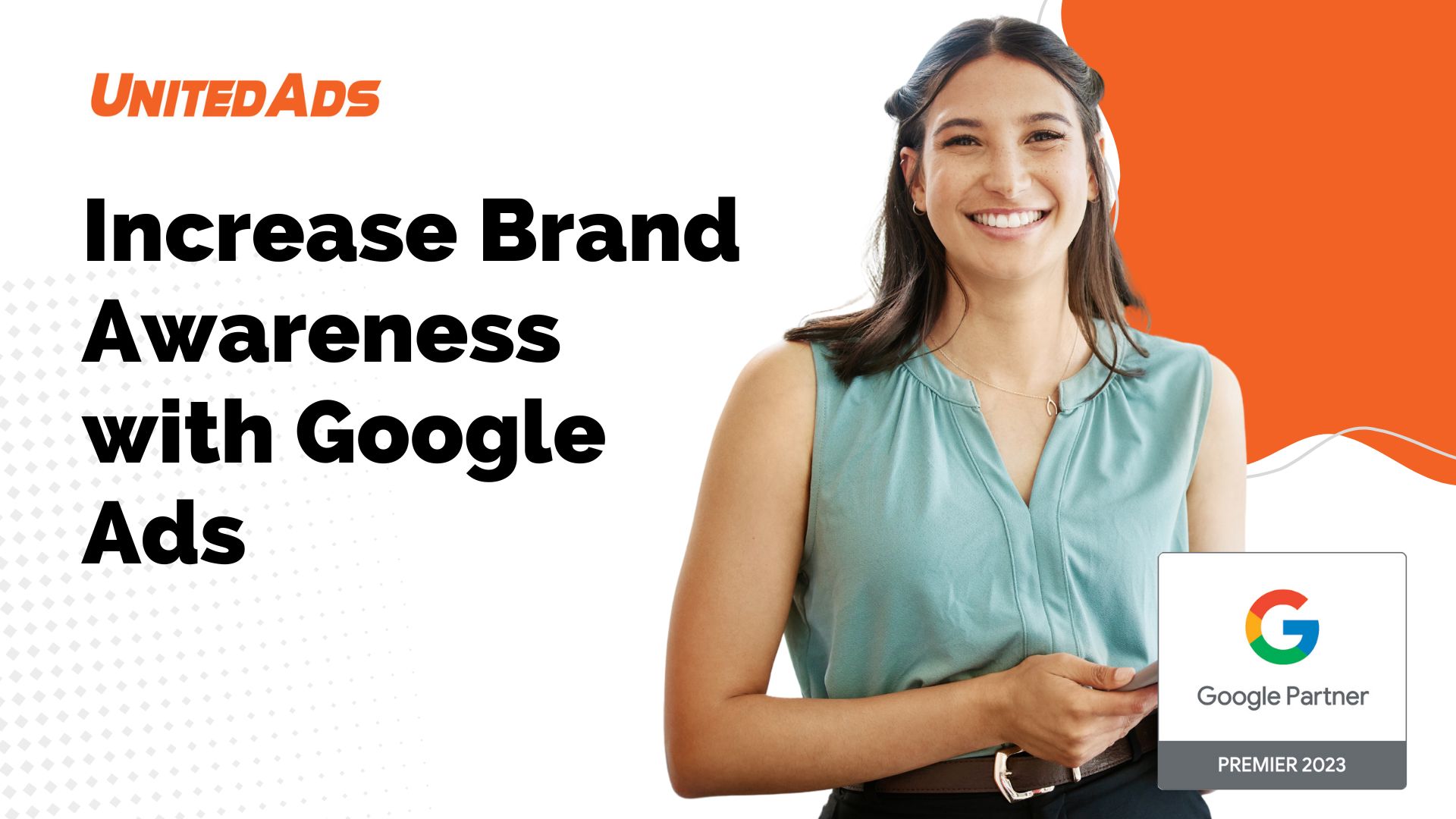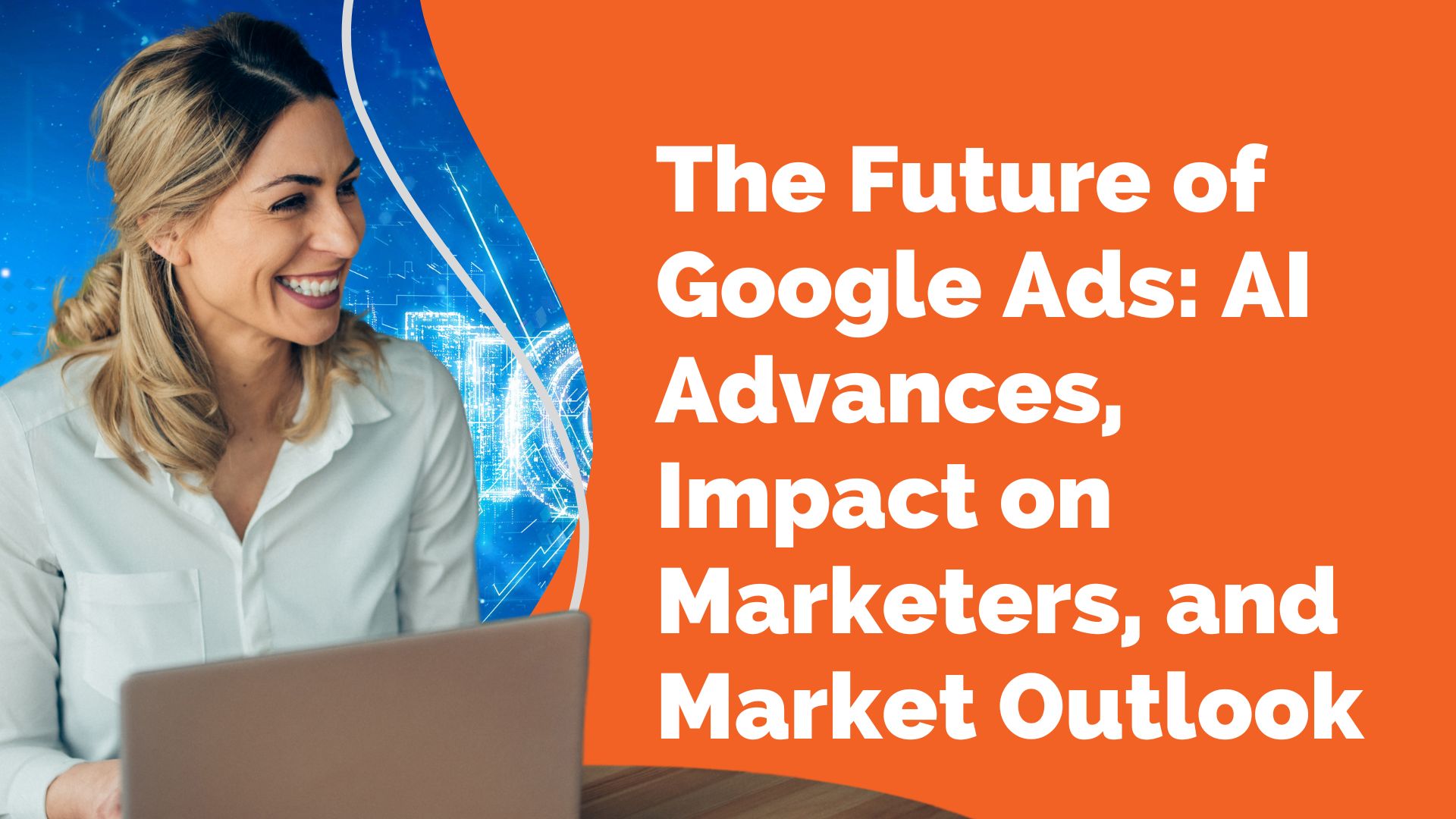Benefits of Using Google Ads for Brand Awareness
Think about this: every second, more than 63,000 searches happen on Google. Now imagine harnessing that kind of reach for your brand. With Google Ads, you get more than just visibility; you gain a powerful tool to put your business in front of the right people, at the right time. Here’s why Google Ads is a game-changer for increasing brand awareness:

Wide Reach
Google Ads provides access to an expansive network, allowing you to reach millions of people across the Google Display Network. Your ads can appear on popular websites, mobile apps, and even YouTube, giving your brand unparalleled exposure. With this kind of reach, you can get your brand noticed by a massive audience, helping you to grow your brand recognition quickly.
Precise Targeting
Not all exposure is equal. Google Ads helps you refine your reach with advanced targeting options. You can target users based on demographics, geographic location, interests, and even behaviors. This precision ensures that your ads are seen by the people who are most likely to resonate with your brand, making your marketing efforts much more effective.
Cost-Effectiveness
Budget flexibility is one of the key benefits of using Google Ads for brand awareness. Whether you’re working with a small budget or a large one, you can set daily spending limits, pay only for the clicks or impressions you want, and adjust your campaign as needed. This means you can maximize your ad spend and make sure every dollar is working toward getting your brand in front of more potential customers.
Tracking Performance
With Google Ads, you don’t have to guess if your brand awareness campaign is working—you’ll know. You can track a variety of metrics, such as impressions, reach, and even how often people are engaging with your ads. This data allows you to continually optimize your campaigns, ensuring that your efforts are always moving the needle for your brand awareness goals.
Types of Google Ads for Brand Awareness
To boost your brand’s presence, you need more than just any ad—you need the right kind of ad. Google Ads offers a range of formats that cater to different brand awareness strategies. Whether it’s capturing attention with stunning visuals or telling your brand story through video, Google Ads has you covered. Here’s a breakdown of the key types of ads you can use to grow your brand recognition:
Display Ads
Display Ads are all about making a visual impact. These ads appear on millions of websites and apps across the Google Display Network, allowing you to catch the eye of potential customers wherever they are browsing. With a combination of images, videos, and interactive elements, Display Ads can grab attention and make your brand memorable.
Video Ads (YouTube)
When it comes to storytelling, nothing beats video. With YouTube being the world’s second-largest search engine, Video Ads offer an incredible opportunity to engage users through compelling stories and visuals. Whether your goal is to create a buzz, share customer testimonials, or showcase a product in action, video content can be a powerful way to build brand awareness.
Search Ads
Search Ads let you reach users who are actively looking for products or services like yours. These ads appear at the top of Google search results when users type in relevant keywords, making your brand more visible to people who are already interested. It’s a great way to make sure your brand is top-of-mind during those crucial moments when potential customers are searching for solutions.
Discovery Ads
Discovery Ads tap into Google’s machine learning to reach people in highly personalized spaces like YouTube’s home feed, Gmail, and Google Discover. These ads appear when users are most receptive to finding new content, making them perfect for introducing your brand to potential customers who may not yet know about you. It’s about meeting people where they’re already engaging.
Setting Up a Google Ads Campaign for Brand Awareness
Launching a Google Ads campaign without a clear plan is like setting sail without a map—you might get somewhere, but it probably won’t be where you intended. For a brand awareness campaign to succeed, every step needs to be purposeful, from choosing the right ad format to targeting the right audience. Here’s a step-by-step guide to help you get started and make an impact:
Step 1: Define Campaign Objectives
The first step is setting clear objectives. Are you aiming to maximize reach, increase impressions, or boost engagement? Knowing your goal will guide all the other decisions in your campaign, ensuring every choice supports your brand awareness strategy. Remember, the goal here isn’t just clicks—it’s about getting your brand seen by as many relevant people as possible.
Step 2: Choose the Right Ad Format
Select an ad format that aligns with your objectives and target audience. Display Ads, Video Ads, and Discovery Ads all offer unique advantages for brand awareness. For example, use Display Ads for visual impact, Video Ads for storytelling, or Discovery Ads to reach users in personalized spaces. The key is to choose a format that will best showcase your brand.
Step 3: Target Audience Selection
Effective targeting is what sets a good campaign apart from a great one. Leverage Google Ads’ advanced targeting features to narrow down your audience based on demographics, interests, geographic location, or even online behaviors. This ensures your ads are seen by the right people—those who are most likely to remember your brand.
Step 4: Craft Compelling Ad Creatives
Your ad creative should do more than just look good; it needs to communicate your brand’s message and values in an instant. Focus on high-quality visuals, clear messaging, and a strong call-to-action that encourages users to engage with your brand. A compelling ad can make the difference between being remembered or forgotten.
Step 5: Set a Budget and Bidding Strategy
Allocate a budget that fits your brand awareness goals and choose a bidding strategy that prioritizes reach or impressions. Whether you use cost-per-thousand impressions (CPM) or other bidding options, the key is to ensure you’re maximizing exposure while staying within budget.
Step 6: Monitor, Optimize, and Adjust the Campaign
Launching the campaign is just the beginning. Use Google Ads metrics like impressions, reach, and view rates to monitor performance. Regularly optimize your ads by tweaking the creatives, adjusting targeting, or reallocating budget based on what’s working. Continuous improvement is essential for achieving the best results.
Targeting Strategies for Brand Awareness Campaigns
Throwing ads at a broad audience and hoping they stick is a waste of time and budget. The real power of Google Ads lies in its ability to target precisely the right people who are more likely to connect with your brand. To make your brand awareness campaign truly effective, you need to employ smart targeting strategies that put your message in front of the people who matter most. Here’s how you can do that:
Remarketing
Remarketing allows you to reach users who have already interacted with your brand but didn’t convert. These individuals have shown some level of interest, making them more likely to engage with your ads. By staying top-of-mind with remarketing, you remind them of what they were interested in, nudging them closer to becoming loyal customers.
Affinity Audiences
Targeting Affinity Audiences helps you engage people who have a long-term interest in a specific topic. Google groups users based on their lifestyle, interests, and preferences, allowing you to show ads to people who already have an affinity with the types of products or services you offer. This makes it easier to connect with audiences that are naturally aligned with your brand.
Custom Intent Audiences
With Custom Intent Audiences, you can target users who are actively researching or showing intent to purchase products similar to yours. By creating audiences based on specific keywords, URLs, or apps that potential customers might be interacting with, you can ensure your ads are seen by people who are in the market for what you offer, driving stronger brand recognition.
Lookalike Audiences (Similar Audiences)
Expand your reach by targeting people who share characteristics with your existing customers. Lookalike Audiences allow you to tap into a larger pool of potential customers who resemble your current audience, increasing the likelihood of resonating with new users. It’s a smart way to scale your brand awareness efforts by focusing on people who are likely to find your brand relevant.
Measuring Brand Awareness Campaign Performance
Launching a brand awareness campaign without measuring its impact is like flying blind. To know whether your efforts are paying off, you need to track the right metrics and analyze the data. Google Ads offers a variety of tools and measurements that can help you understand how well your brand awareness campaign is working and where there’s room for improvement. Here’s what you should be looking at:
Key Metrics to Track
To gauge the success of your campaign, focus on metrics that show how many people saw your ads and how often. Important metrics include:
- Impressions: The number of times your ad was shown. Higher impressions indicate that your brand is reaching more people.
- Reach: The number of unique users who saw your ad. This helps you understand the breadth of your audience exposure.
- Frequency: The average number of times an individual user sees your ad. Finding the right balance is key to avoiding ad fatigue while keeping your brand top of mind.
- Engagement metrics: While clicks aren’t the primary goal for brand awareness, higher engagement can still indicate that your ads are resonating with your audience.
View-Through Conversions
Not every customer converts right after seeing an ad, but that doesn’t mean the ad had no impact. View-through conversions track users who saw your ad and later visited your website or made a purchase, giving you a better understanding of the indirect effects of your brand awareness efforts. This metric is particularly useful for understanding the full picture of your ad’s influence on user behavior.
Brand Lift Studies
To measure the impact on brand perception, consider running a Brand Lift Study. This tool measures how your ads affect key brand metrics like brand recall, awareness, consideration, and favorability. It’s a valuable way to assess whether your campaigns are shifting the needle in terms of how people perceive your brand, beyond simple metrics like impressions or clicks.
Using Google Analytics for Deeper Insights
Google Analytics can complement your Google Ads data by providing more detailed insights into user behavior. Track website visits, bounce rates, and time on site to understand how your ads are driving traffic and engagement. By combining these insights with Google Ads metrics, you can get a clearer picture of how well your brand awareness campaign is performing.
Tips and Best Practices for Effective Google Ads Brand Awareness Campaigns
Getting your brand in front of the right audience is just the beginning; making a lasting impression requires a thoughtful approach. By following some proven tips and best practices, you can ensure your Google Ads brand awareness campaigns don’t just get seen but also remembered. Here’s how to make your campaigns stand out and deliver results:
Create High-Quality Ad Creatives
First impressions matter. Make sure your ad creatives are visually appealing and professionally designed. Use high-quality images or videos, compelling headlines, and a clear message that resonates with your target audience. The more eye-catching your ads are, the more likely they are to make a memorable impact and foster brand recognition.
Utilize A/B Testing for Ad Variations
Don’t settle for a one-size-fits-all approach. A/B testing, or split testing, allows you to run multiple versions of an ad to see which performs better. Test different visuals, headlines, calls-to-action, or ad formats to identify what resonates most with your audience. Continuous testing and optimization can significantly improve the effectiveness of your brand awareness campaign.
Leverage Seasonal Trends and Relevant Events
Align your campaigns with seasonal trends, holidays, or major events relevant to your industry. This makes your ads more timely and appealing, increasing the chances that they will resonate with your audience. Adjusting your messaging to reflect current events or trends shows that your brand is engaged with what matters to your customers.
Ensure a Strong Landing Page Experience
Your ads may grab attention, but it’s the landing page that seals the deal. Make sure the landing page your ads link to is relevant, loads quickly, and provides a seamless user experience. It should reflect the messaging of the ad and offer a clear path for users to engage with your brand further, whether that’s learning more, signing up, or exploring products.
Set Up Conversion Tracking
Even though your primary goal is brand awareness, tracking user actions after seeing your ads is still valuable. Set up conversion tracking to measure behaviors such as website visits, content views, or form submissions. This helps you understand how well your ads are driving engagement and provides insights for optimizing future campaigns.
Maintain Consistent Branding Across All Channels
Consistency is key in building brand recognition. Ensure that your ads follow the same style, tone, and messaging as your other marketing materials. Whether users see your brand on Google Ads, social media, or your website, they should experience a cohesive brand presence that reinforces your identity.
Conclusion
Boosting brand awareness with Google Ads isn’t just about getting your name out there—it’s about making sure your brand is seen by the right people and remembered for the right reasons. By leveraging the various ad formats, targeting options, and measurement tools available, you can create campaigns that not only reach a wide audience but also resonate with them. This multi-faceted approach helps you build a stronger brand presence over time.
The key to a successful brand awareness campaign lies in thoughtful planning, ongoing optimization, and a commitment to understanding your audience. From setting clear objectives and choosing the right ad types to continually monitoring performance and adjusting your strategy, every step plays a role in shaping how your brand is perceived.
Don’t just settle for visibility—aim for impact. Start by implementing the strategies outlined here, and watch as your brand awareness grows. With the right approach and tools at your disposal, Google Ads can be a powerful ally in expanding your brand’s reach and influence. Now is the time to take action and start building a brand that people will recognize and trust.







